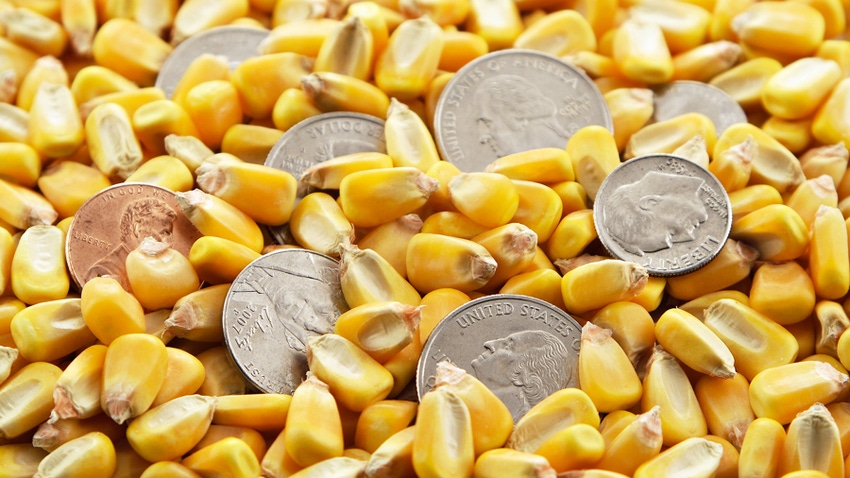
It seemed that late last year all we heard about was how poor exports were for corn.
Despite only making up 15% of corn demand, the market seemed solely focused on this single issue.
The market likes to “overdo” things, either exploding too high on moderately bullish news or falling too fast on moderately bearish news. Poor exports were a perfect example, as the market dropped 60 cents last November as the news focused on lackluster exports. They later clawed back about two-thirds of that loss as the market had clearly overreacted.
The export market is seasonal. Brazil dominates the second half of the year with their corn exports as their harvest picks up in July. Once they run out of corn at the end of the year, the U.S. takes center stage as the world’s primary corn exporter.
To a certain extent, much of this is choreographed. None of that seemed to matter to the grain trade.
Brazil’s longer tail
One repercussion of Brazil’s growth is that its export season is having a longer tail, which pushes itself into what is supposed to be our export season. As Brazilian corn is usually priced competitively to that in the U.S., this works to undercut our market more and more. We are finally past that point. Brazil is virtually out of corn and won’t have anything more to give until next July.
That means this is U.S. corn exports' time to shine. The market has collapsed again on us, making corn cheaper for global buyers -- which should help uncover more demand. As prices drop, they become more attractive to places like China who then step in and potentially begin buying more than they otherwise would have.
Ideally, we would hope for the opposite effect from what we saw last November, leading to a rally.
We have been fortunate to have both Japan and Mexico as long-time U.S. corn buyers. They have been consistent about purchasing our corn. While we have seen modest increases in their purchasing volume, it was China that catapulted U.S. exports to all-time highs in 2020.
While public opinion has vilified China and geopolitical tensions remain strained, our marketing fortunes remain tethered to how much or how little China continues to purchase. China has continued to demonstrate that we have become their second choice when it comes to meeting their food needs. Even after signing the Phase One trade deal, their buying pattern remained unchanged. Which is to say, they bought from Brazil everything that they could, and when Brazil was no longer an option, then they would consider buying from the U.S.
For the moment, the market remains unconvinced that exports will pick up enough to ignite a rally. Bulls don’t exactly have a lot to look forward to. The next major report will be the stocks and acreage report next week, which could show just how poor demand has been.
The market is digesting 91 million acres for 2023, expecting only a modest boost in corn as its financial metrics show an advantage over soybeans. Therefore, a surprise below that could help propel prices higher. Of course, the opposite of that is also true.
Planting season weather
Perhaps even more important than the number of acres we plant is how much weather cooperates during planting. It is my experience that if you can get your crop in on time with a uniform stand, you are already over 50% of the way to APH yields or higher.
The market knows this too. If we get to May 1 and crop conditions are generally ideal, we will likely see further deterioration in the markets. There are always going to be trouble spots and the market will shrug those off. It will need to be a widespread event for there to have any sort of bullish reaction.
We have stated in prior reports that while we looked for a rally, those rallies may be short-lived as they would trigger additional sales, keeping prices depressed. Farmer mentality is such that many made promises to themselves that if prices got back to “X” they would finally pull the trigger on remaining old crop. I think we saw some of that yesterday which is why we are seeing such a sharp sell off after a rally leaving a long tail.
Prices did trade above $6.39 in the May contract, which was important resistance, but were unable to close above this. Even if prices do continue to rebound, we see very strong resistance at $6.70 to $6.75.
There is no guarantee old crop will get back to those levels and could stall out anywhere in between.
Matthew Kruse is President of Commstock Investments. You can subscribe to their report at www.commstock.com.
Futures trading involves risk. The risk of loss in trading futures and/or options is substantial and each investor and/or trader must consider whether this is a suitable investment. Past performance is not indicative of future results. Trading advice is based on information taken from trades and statistical services and other sources that CommStock Investments believes to be reliable. We do not guarantee that such information is accurate or complete and it should not be relied upon as such. Trading advice reflects our good faith judgment at a specific time and is subject to change without notice. There is no guarantee that the advice we give will result in profitable trades.
The opinions of the author are not necessarily those of Farm Futures or Farm Progress.
About the Author(s)
You May Also Like






